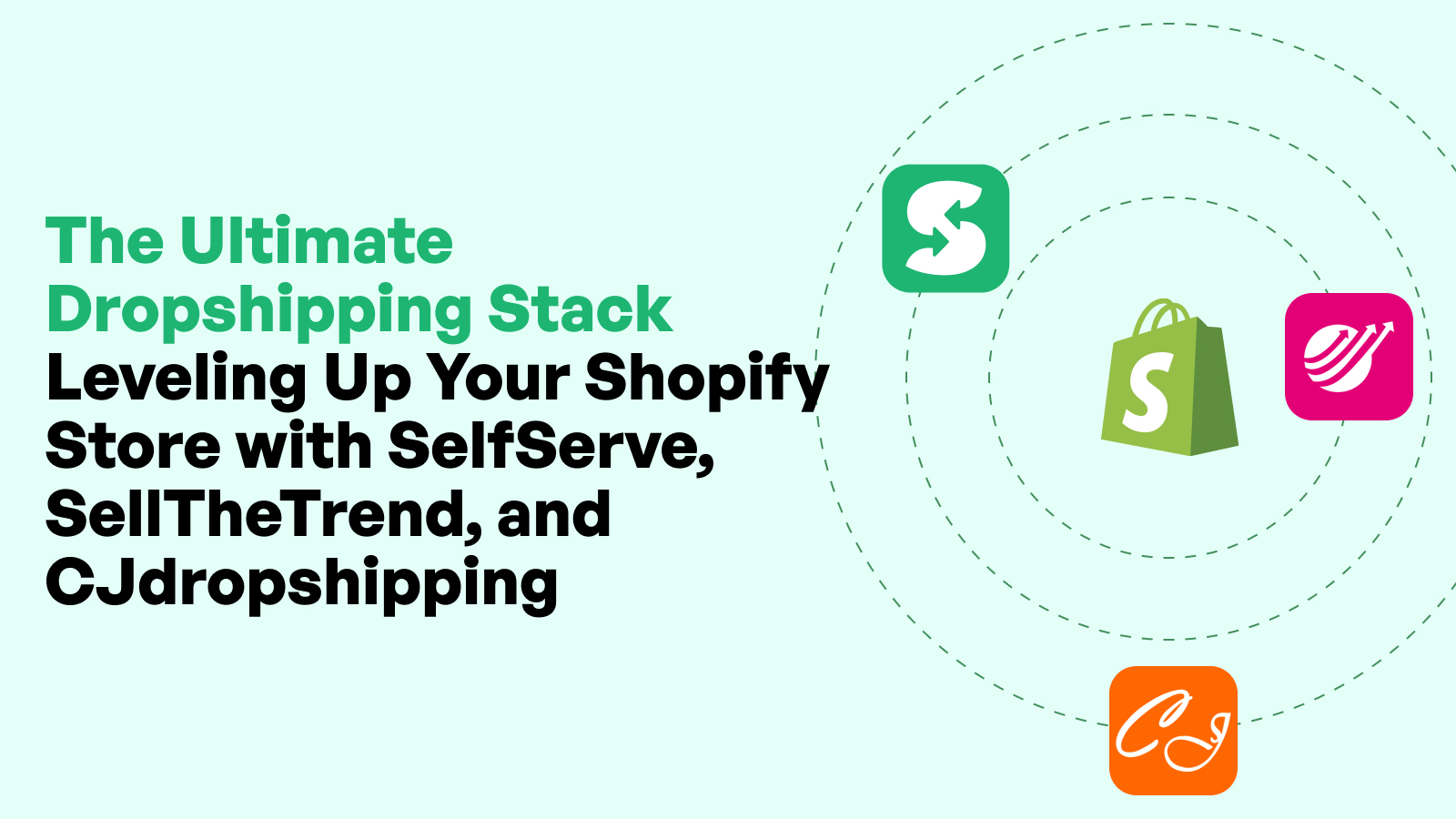Shipping and Fulfillment: Best Practices for Shopify Merchants

Introduction to Shipping and Fulfillment for Shopify Stores
For Shopify merchants, shipping and fulfillment represent far more than just backend logistics. They are integral components of customer experience, brand perception, and operational efficiency. In a world where next-day delivery is often expected and customers demand visibility throughout the process, fulfillment can be the deciding factor between a one-time buyer and a loyal customer.
E-commerce fulfillment encompasses everything from packaging and shipping products to managing inventory and returns. When streamlined effectively, it can reduce costs, enhance customer satisfaction, and boost long-term retention. Conversely, poor fulfillment can lead to negative reviews, chargebacks, and lost trust. Shopify merchants who understand the weight of these operations and proactively optimize their systems will not only stay competitive — they'll lead.
The Critical Role of Fulfillment in E-commerce Success
Fulfillment plays a pivotal role in e-commerce because it bridges the gap between the digital promise and physical delivery. When a customer places an order on a Shopify store, they’re not just buying a product — they’re buying a promise. That promise includes timely delivery, secure packaging, and the assurance that their item will arrive as expected.
The success of a Shopify merchant often hinges on fulfillment consistency. If orders are shipped late, damaged, or incorrectly, it erodes customer trust and can harm your reputation. But a well-oiled fulfillment strategy can drive repeat business, referrals, and positive reviews, creating a strong competitive advantage in the marketplace.
How Shipping Impacts Customer Experience and Retention
Shipping is a make-or-break factor in customer satisfaction. A seamless checkout experience followed by a delayed or problematic delivery can undo all your hard work. Customers value transparency, speed, and reliability. Offering clear delivery timelines, multiple shipping options, and real-time tracking boosts confidence and satisfaction.
In fact, according to Shopify data, nearly 60% of abandoned carts are due to unexpected shipping costs or delivery delays. Shopify merchants who communicate clearly, provide flexible options, and deliver on time significantly reduce the risk of cart abandonment and churn. Shipping and fulfillment are not just logistical tasks — they are crucial touchpoints in the customer journey.
Building a Fulfillment Strategy That Scales
Choosing Between In-House, Third-Party, and Dropshipping Models
Every Shopify merchant must choose a fulfillment model that aligns with their growth goals, budget, and product type. In-house fulfillment offers full control and brand consistency but can become unsustainable as order volume scales. It suits smaller stores or those with custom packaging and niche audiences.
Third-party logistics (3PLs) provide scalability and can streamline operations by handling warehousing, picking, packing, and shipping. This model is ideal for Shopify merchants who want to focus on growth and marketing rather than warehouse management. However, vetting the right 3PL partner is critical to ensure brand alignment and service quality.
Dropshipping eliminates the need for inventory altogether. Products are shipped directly from the supplier to the customer. While this model reduces upfront costs, it comes with less control over shipping times and product quality. For Shopify merchants, a hybrid approach — blending in-house for top sellers and 3PL or dropshipping for extended catalog — often delivers the best of both worlds.
Assessing Your Store’s Needs Based on Volume and Geography
Scalability isn’t just about handling more orders; it’s about doing so efficiently, regardless of customer location. Shopify merchants must evaluate their order volume and shipping geography. A store fulfilling ten orders a day across one city will require a different strategy than one shipping 1,000 orders a day across multiple countries.
Review your sales reports to understand order frequency, location clusters, and peak periods. Merchants with international audiences may benefit from distributed fulfillment centers or services like Shopify Fulfillment Network, which offer reduced shipping times and rates. Understanding where your orders come from and how quickly customers expect delivery will shape your fulfillment roadmap.
Setting Up Shopify Shipping the Right Way
Navigating Shopify’s Native Shipping Settings
Shopify’s built-in shipping tools allow merchants to manage rates, zones, carriers, and more — all within the admin panel. By default, Shopify provides several templates, but customization is key to ensuring the system meets your specific needs.
You can set up different shipping zones to segment rates by region or country. This lets Shopify merchants offer localized pricing, such as free shipping domestically while charging flat rates for international orders. Additionally, you can set shipping rules by product type or weight, giving you full control over how shipping costs are calculated and presented to customers.
Understanding Shipping Profiles, Zones, and Rates
Shipping profiles in Shopify allow merchants to assign specific rates and rules to individual products or product groups. This is especially useful if you sell items with varying sizes, weights, or fragility. For example, a Shopify merchant selling both t-shirts and ceramics might need separate profiles to account for the packaging and shipping differences.
Zones are geographic groupings used to define where you ship and how much you charge. These zones can be assigned flat rates, real-time carrier rates, or conditional rates based on cart value or weight. Balancing these factors allows you to stay competitive while maintaining margins.
Real-time Carrier Calculations vs. Flat-Rate Shipping
Real-time carrier-calculated rates pull live pricing from carriers like USPS, FedEx, and UPS based on the customer’s location, cart weight, and your package settings. This ensures accurate shipping fees, especially useful for Shopify merchants dealing with varied order sizes or international destinations.
Flat-rate shipping offers simplicity. Customers know what they’ll pay upfront, which can reduce cart abandonment. However, if not priced correctly, it may lead to losses or overcharging. Many Shopify merchants adopt a hybrid strategy — real-time rates for international and heavy orders, and flat rates for standard domestic shipments.
Packaging Best Practices for Shopify Merchants
Branded Packaging vs. Cost-efficiency: Striking the Balance
Packaging is the first physical touchpoint your customer has with your brand. Branded packaging enhances unboxing experiences and encourages user-generated content, which is especially valuable in an era dominated by social sharing. However, for Shopify merchants managing thin margins, investing in custom boxes, tissue paper, or inserts must be weighed against unit economics.
One approach is to reserve premium packaging for higher-tier orders or first-time customers. Alternatively, use branded stickers, stamps, or eco-friendly materials as cost-effective yet brand-conscious enhancements. The goal is to impress without inflating your shipping costs.
Eco-friendly Packaging and Consumer Expectations
Environmental sustainability is increasingly important to consumers. Shopify merchants using recyclable, compostable, or minimal packaging not only reduce their carbon footprint but also build brand loyalty with eco-conscious customers. Shopify even allows you to highlight eco-friendly practices on your store, reinforcing your commitment.
Brands like Allbirds and Package Free Shop have set strong precedents by aligning sustainability with fulfillment. Consider partnering with suppliers that offer biodegradable materials or FSC-certified boxes. Small decisions like using paper tape instead of plastic can make a meaningful impression.
Reducing Packaging Waste Without Sacrificing Quality
Efficient packaging doesn't mean cheap packaging. It means using just enough materials to protect the product while minimizing waste. Shopify merchants should standardize box sizes, use airless or recyclable fillers, and avoid oversized boxes that inflate dimensional weight charges.
Some merchants implement software to calculate optimal packaging based on cart contents. This reduces shipping costs and aligns with carrier guidelines. When quality and efficiency align, packaging becomes a strategic advantage.
Offering Competitive and Profitable Shipping Options
Free Shipping: When It Works and When It Hurts
Free shipping remains one of the most persuasive conversion drivers for Shopify merchants. Customers often perceive it as a bonus, even when product prices are adjusted to compensate. However, offering free shipping indiscriminately can erode profit margins, especially for low-priced or heavy products.
The key is strategic implementation. Offer free shipping above a certain cart threshold, limited to specific regions, or only on select items. This encourages upsells while protecting margins. Analyze your shipping cost data to determine break-even points and adjust thresholds accordingly.
Tiered Shipping Strategies Based on Cart Value
Tiered shipping incentivizes higher spend while maintaining profitability. For example, a Shopify store might offer $5 shipping for orders under $50, $2.99 for orders between $50 and $100, and free shipping for orders above $100. This model nudges customers to increase their order value.
Shopify merchants can implement tiered shipping using advanced shipping rules within Shopify or through apps like Advanced Shipping Rules or Better Shipping. These solutions offer flexibility in creating rate tables based on multiple variables, helping you balance conversion goals with financial viability.
Real-world Examples of Profitable Shipping Models
Many successful Shopify merchants tailor shipping models to customer psychology and product type. A skincare brand might offer free shipping and returns to boost trial rates, while a furniture brand may charge flat-rate freight to offset high carrier costs.
Subscription brands often bake shipping into the product price, advertising "free shipping forever" as a loyalty perk. Merchants selling small, light items often favor USPS First-Class Mail or carrier-aggregated platforms to save on costs. By studying your category and experimenting, you can find the sweet spot between cost and competitiveness.
Managing Inventory for Smooth Fulfillment
Syncing Inventory Across Locations and Warehouses
As Shopify merchants expand to multiple fulfillment centers or marketplaces, inventory accuracy becomes critical. Mismatched stock levels can result in overselling, backorders, or costly refunds. Shopify’s multi-location inventory feature helps track inventory by warehouse, retail store, or third-party partner.
Ensure each SKU is assigned to the correct location, and regularly audit discrepancies. Use inventory management systems like TradeGecko (now QuickBooks Commerce) or Stocky to sync inventory across Shopify, Amazon, POS, and warehouse tools. Real-time visibility into stock ensures smoother operations and a better customer experience.
Using Shopify Inventory Management Tools Effectively
Shopify’s native tools include inventory tracking, low-stock alerts, and reorder reports. Merchants can set up automated restock thresholds and receive notifications when popular items run low. Bundling apps can help track inventory levels for kits and multi-product offers.
For more advanced needs, Shopify Plus merchants can utilize APIs or integrations with ERPs. These setups are especially useful for larger catalogs or merchants needing custom workflows. Managing inventory is not just about stock — it’s about ensuring orders can be fulfilled accurately, on time, and without disruption.
Safety Stock, Backorders, and Avoiding Stockouts
To maintain fulfillment stability, Shopify merchants should maintain safety stock for bestsellers and seasonally high-volume items. This buffer reduces the risk of stockouts due to demand surges or supply chain delays. Use historical data and predictive analytics to estimate ideal safety stock levels.
Backorders can be a useful tool, but transparency is key. Always inform customers if items are on backorder and provide estimated delivery dates. Use back-in-stock alerts to notify interested customers once inventory returns, turning potential losses into regained sales.
Choosing the Right Fulfillment Partners and Solutions
Comparing Shopify Fulfillment Network vs. 3PLs
Shopify Fulfillment Network (SFN) offers Shopify merchants an integrated, reliable, and Shopify-managed fulfillment solution. It’s designed to provide two-day delivery across the U.S., real-time tracking, and direct platform integration. SFN is a strong choice for growing brands that want plug-and-play scalability without managing logistics independently.
Third-party logistics (3PLs), on the other hand, provide a broader range of capabilities. They may offer global fulfillment, B2B distribution, returns processing, and specialized packaging services. Leading 3PLs like ShipBob, ShipMonk, or Red Stag Fulfillment allow more customization but require more oversight and management.
Choosing between SFN and a 3PL depends on your operational needs, product complexity, and growth goals. Shopify merchants should evaluate both based on location coverage, integration ease, SLAs, and long-term scalability.
Evaluating Partner SLAs, Reliability, and Scalability
Service level agreements (SLAs) define expectations around fulfillment accuracy, shipping speed, return processing, and customer service. Shopify merchants should demand transparency and accountability from fulfillment partners. Missed SLAs can damage your brand and customer satisfaction.
Ask potential partners about error rates, processing times, and software compatibility. Request references from other Shopify merchants or case studies. Also consider the partner’s ability to scale — will they grow with you during peak seasons and international expansion?
Integrating with Fulfillment Apps and ERPs
Seamless integration ensures accurate, real-time communication between your store, warehouse, and customers. Shopify merchants can use apps like ShipStation, Easyship, or Inventory Planner to connect with fulfillment centers, automate label creation, and update order statuses.
If your business requires broader operational control, integrating with an ERP system can centralize inventory, finances, and order management. Solutions like NetSuite, Skubana, or Brightpearl offer enterprise-grade oversight. When properly configured, these integrations reduce manual input, eliminate errors, and improve fulfillment speed.
Cross-border and International Shipping Tactics
Handling Duties, Taxes, and Customs Declarations
International expansion opens up huge revenue potential but also introduces complexity. Shopify merchants must address customs, duties, and taxes upfront to avoid delays and dissatisfied customers. Options include DDU (Delivered Duty Unpaid) and DDP (Delivered Duty Paid). DDP is preferred as it shows total cost at checkout and avoids surprise fees.
Apps like Zonos or Easyship help automate cross-border compliance, generate customs declarations, and offer landed cost calculators. Be sure to research destination-specific restrictions or requirements, such as documentation or licensing needs.
Localizing Shipping Methods and Delivery Estimates
Localization extends beyond currency and language — it also includes offering region-specific delivery options. For instance, European customers might prefer DHL or Hermes, while Australian customers expect Australia Post. Shopify merchants can boost trust and conversions by offering familiar carriers and realistic delivery timelines.
Displaying delivery windows based on destination and carrier capacity is critical. This manages expectations and reduces customer support queries. Use Shopify’s estimated delivery features or tools like ShipperHQ to display dynamic shipping estimates.
Tools and Services to Simplify Global Fulfillment
Services like Passport Shipping, Global-e, and BorderGuru offer end-to-end international fulfillment solutions for Shopify merchants. They handle everything from customs clearance to localized tracking and currency conversion. For merchants scaling internationally, these partners simplify what would otherwise be a complex logistics challenge.
Shopify also supports multicurrency and multilingual checkout, enabling global shoppers to complete purchases in their native context. Combine these with reliable fulfillment tools and you can confidently grow into new markets.
Handling Returns and Reverse Logistics
Creating a Hassle-free Shopify Return Policy
A clear, fair return policy reduces purchase hesitation and builds trust. Shopify merchants should place their policy visibly on product pages, the cart, and in post-purchase emails. Offer a window of 14–30 days and specify acceptable return conditions.
Automated return portals improve the customer experience. Apps like Loop Returns or Returnly allow shoppers to initiate returns, print labels, and choose between refunds or exchanges. Clear communication and user control minimize customer frustration.
Managing Return Shipping Costs and Processes
Return shipping costs can be a significant expense, especially for international orders or heavy goods. Shopify merchants can offset this with return shipping insurance, offering partial refunds, or deducting shipping from the refund amount when clearly stated in the policy.
Where possible, offer in-store returns (if operating retail locations) or return drop-offs at designated points. Streamlining the return process encourages repeat purchases and reduces operational strain.
Restocking, Exchanges, and Refund Workflows
Efficient return workflows depend on clear internal processes. Once a product is returned, Shopify merchants should inspect, restock, and update inventory promptly. Exchanges should be processed swiftly to maintain customer goodwill.
Integrate return systems with inventory management and customer support tools to ensure a seamless experience. Automating refund approvals or store credit issuance can reduce handling time and increase loyalty.
Automating Shipping and Fulfillment Workflows
Using Shopify Flow and Automation Apps
Shopify Flow, available to Shopify Plus merchants, enables powerful automation based on triggers and conditions. You can automatically tag high-risk orders, notify teams of fulfillment delays, or initiate backorder alerts. This reduces manual workload and improves operational efficiency.
Apps like Arigato Automation or Alloy Automation offer similar features for non-Plus merchants. These platforms can connect your Shopify backend with marketing, inventory, and fulfillment apps to automate repetitive tasks.
Barcode Scanning, Pick/Pack/Ship Automation
Barcode scanning reduces picking errors and speeds up order processing. Shopify merchants can use apps like Stocky (for Shopify POS) or SKUSavvy to scan inventory, verify SKUs, and streamline packing. This is especially useful in high-volume environments.
Automating pick/pack/ship workflows improves order accuracy and shipping speed. Generate packing slips, shipping labels, and carrier pickups from a centralized dashboard. Efficiency here directly impacts customer satisfaction.
Order Routing Based on Inventory Location
Multi-location fulfillment demands intelligent order routing. Shopify merchants can automate order assignment based on proximity to the customer, inventory availability, or shipping speed.
Apps like ShipHero and Multi-Location Inventory Info allow dynamic routing, minimizing shipping time and cost. This is essential for merchants using distributed fulfillment centers or both in-house and 3PL strategies.
One powerful tool for Shopify merchants aiming to consolidate these automation workflows is the Self Serve Shopify App. It enables intelligent order routing, real-time shipping label generation, and integration with customer-facing notifications — significantly improving operational efficiency while maintaining a seamless customer experience.
Measuring Fulfillment Performance and Efficiency
Key Metrics: Delivery Speed, Order Accuracy, Shipping Cost per Order
Tracking key performance indicators (KPIs) is essential for improving fulfillment operations. Shopify merchants should regularly evaluate delivery speed, order accuracy rate, and average shipping cost per order. Delivery speed impacts customer satisfaction directly, while order accuracy ensures lower return rates and fewer support tickets.
Shipping cost per order affects overall profitability and should be benchmarked by region, carrier, and package type. Review these metrics weekly or monthly to identify bottlenecks, inefficiencies, or opportunities for improvement.
How to Audit Fulfillment Operations Regularly
Auditing your fulfillment process involves reviewing workflows, software integrations, and performance benchmarks. Shopify merchants should periodically assess warehouse layout, pick/pack processes, and error rates. Conduct sample order tests to evaluate packing quality and shipping times.
Internal audits help identify gaps that external customers may not immediately report. Combine operational data with customer feedback to create a comprehensive view. Document your findings and implement SOP updates as needed.
Benchmarking Against Industry Standards
Understanding how your fulfillment performance compares to industry standards can provide valuable perspective. Shopify merchants should aim for a 98–99% order accuracy rate and 1–2 day processing time for in-stock items.
For delivery speed, 2–5 business days is ideal for domestic orders, while 7–14 days is common for international shipments. Use benchmarking data from logistics providers or Shopify community insights to evaluate your performance and set realistic goals.
Holiday and High-volume Fulfillment Planning
Seasonal Inventory Forecasting and Warehouse Prep
Peak seasons like Black Friday, Cyber Monday, and Q4 holidays can make or break annual revenue targets. Shopify merchants must plan inventory six to eight weeks in advance, using past data to forecast demand and secure adequate stock.
Coordinate with suppliers early to avoid delays. Prepare your warehouse with clear zones, increased staffing, and efficient flow layouts. Run stress tests to identify weaknesses before the rush begins.
Temporary Shipping Rate Adjustments and Cutoff Dates
Carriers often adjust rates during peak seasons. Shopify merchants should prepare by updating shipping tables, customer-facing rates, and checkout messaging. Set clear holiday cutoff dates for each shipping tier and communicate them on your homepage, product pages, and email campaigns.
This transparency sets expectations and reduces post-purchase inquiries. Use automated banners or pop-ups to dynamically inform customers based on region or order date.
Communicating Clearly With Customers During Peak Seasons
Proactive communication is crucial when shipping volumes spike. Shopify merchants should send timely emails with order confirmations, estimated delivery windows, and tracking links. Notify customers of any unexpected delays and provide alternative options when possible.
Use automation tools or your CRM to create segmented communication flows for high-risk regions or late-season buyers. Clarity and responsiveness during busy periods foster long-term trust and retention.
Mitigating Shipping Risks and Carrier Challenges
Addressing Lost, Delayed, or Damaged Shipments
Despite best efforts, issues like lost or damaged packages will occur. Shopify merchants should develop standardized responses for these situations, including replacements, refunds, or store credit. Ensure customer support teams are trained to handle these cases efficiently.
Use shipping insurance or opt for carriers that include coverage. For valuable items, consider requiring signature upon delivery. Transparency and responsiveness go a long way toward mitigating damage to customer trust.
Carrier Insurance and Claims Management
When problems arise, filing claims with carriers should be streamlined. Keep records of order details, tracking numbers, photos, and customer correspondence. Most carriers have time-limited claim windows, so act promptly.
Apps like Route or Shipsurance provide bundled protection and simplified claim filing, giving Shopify merchants peace of mind and reducing administrative burden.
Multi-carrier Strategies to Reduce Risk
Relying on a single carrier exposes you to greater disruption risk. Shopify merchants should diversify with at least two domestic carriers and one international option. This flexibility allows you to re-route shipments, negotiate rates, and maintain operations during service outages or labor disruptions.
Use rate-shopping tools to dynamically select the best carrier for each order based on destination, cost, and reliability. This approach also supports contingency planning.
Leveraging Data to Optimize Shipping Costs
Analyzing Carrier Performance and Rate Trends
Not all carriers perform equally. Shopify merchants should analyze metrics like delivery success rate, on-time percentage, and claim frequency. Identify your top-performing routes and match them to cost-effective carriers.
Negotiate with carriers annually, armed with your data. Loyalty doesn’t guarantee value — let the numbers lead your decisions.
Using Zones and Package Weight Data to Reduce Fees
Understanding how carriers calculate rates is essential. Dimensional weight, shipping zones, and package sizes all affect cost. Shopify merchants can reduce fees by optimizing box sizes, minimizing air space, and consolidating shipments.
Use data to segment your products into optimized shipping profiles. For example, bundle small accessories or switch from box to poly mailers for light apparel items.
Negotiating Rates With Carriers as You Scale
As your shipping volume grows, so does your negotiating power. Shopify merchants should periodically request custom rate tables from carriers. Share your growth projections and offer to consolidate volume to one carrier in exchange for better pricing.
Even small discounts across thousands of shipments can yield significant annual savings. Consider enlisting a shipping consultant or using a rate negotiation platform if needed.
Conclusion: Fulfillment as a Competitive Advantage
Shipping and fulfillment are no longer just operational backends — they are front-line contributors to growth, profitability, and customer loyalty. For Shopify merchants, every aspect of fulfillment — from warehouse layout to automated tracking emails — is a chance to delight customers and gain a competitive edge.
Investing in smart tools, proactive communication, and a reliable network of partners will transform fulfillment from a cost center into a strategic asset. And for those seeking an efficient, scalable way to automate these workflows and enhance checkout operations, the Self Serve Shopify App provides a valuable toolkit for streamlining fulfillment, routing orders intelligently, and maintaining a consistent customer experience at scale.
SEO FAQs
1. What is the best shipping strategy for new Shopify merchants?
New Shopify merchants should start with a simple strategy, such as flat-rate or free shipping on domestic orders. As you grow, use data to layer in real-time carrier rates and conditional shipping rules based on cart value.
2. How do I integrate fulfillment partners with Shopify?
Use Shopify’s native shipping settings or third-party apps like ShipStation, Easyship, or directly connect to a 3PL via Shopify’s API or fulfillment partner integrations. Choose a solution that matches your volume and needs.
3. Can I automate the fulfillment process on Shopify?
Yes, Shopify supports extensive automation. Use Shopify Flow (for Plus users) or apps like Arigato and the Self Serve Shopify App to automate tasks like order routing, label generation, and tracking emails.
4. What are the top fulfillment metrics to track?
Shopify merchants should track delivery speed, order accuracy, return rate, and shipping cost per order. These metrics provide insights into both customer satisfaction and operational efficiency.
5. How do I manage international shipping taxes and duties?
Use apps like Zonos, Easyship, or Global-e to automate customs declarations, duties, and tax calculations. Offer DDP (Delivered Duty Paid) to avoid surprise fees and improve international conversions.




